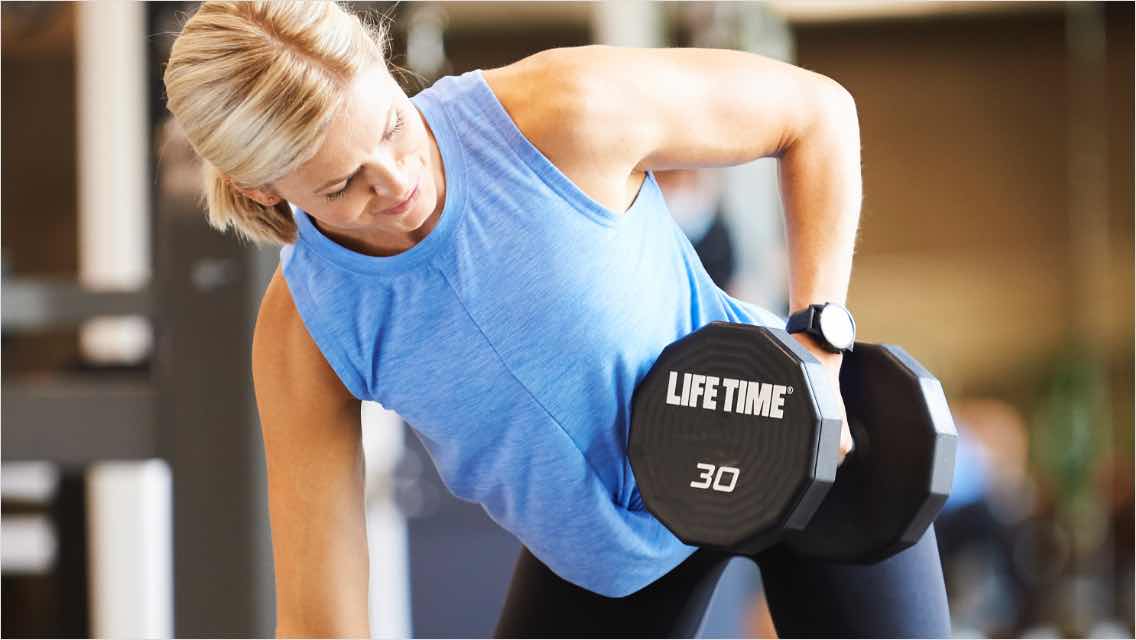Use heavier weights when your client is under recovered? That advice would seem opposite of what most people think, but a study out of the Physical Performance & Athletic Research Center in Seville, Spain says just that.
Study Overview
This study compared the effects of 4 different lifting protocols on post exercise recovery. The protocols were 60% or 80% of 1 Rep Max (RM) and 20% or 40% drop in velocity.
| Protocol | % RM | % Velocity Drop |
| 1 | 60% | 20% |
| 2 | 60% | 40% |
| 3 | 80% | 20% |
| 4 | 80% | 40% |
Instead of using a traditional rep range target, participants did 3 sets of barbell back squats at either 60% or 80% 1RM until they reached the target drop in bar speed (velocity). They used velocity drop to both assess the impact of bar speed on recovery, as well as better equalize the fatigue effects on participants. As you have probably observed with your clients, there can be a large variation in number of reps a person is able to complete at a given Rep Max. By using velocity drop, they could ensure each person reached a similar level of fatigue in each set. There is a growing trend to use velocity-based training vs traditional reps, especially with athletic focused goals.
What did they find?
Here is the Authors conclusion: “A higher velocity loss during the set (40%) and a lower relative load (60% 1RM) resulted in greater fatigue and slower rate of recovery than lower velocity loss (20%) and higher relative load (80% 1RM).”
Most interesting to me was that the 60/20 and the 80/40 protocols had similar impacts on recovery. This stands out so much because a 40% velocity drop should be significantly more fatiguing and much closer to failure than a 20% drop.
Higher rep sets have less intramuscular pressure, allowing for the body to remove metabolites during the set. Because of this the fatigue present is going to be more neurological in nature. When doing lower rep sets, the overall tension and pressure is higher creating a lot more localized fatigue due to metabolite build up.
What does this look like practically?
- 60% 1 RM is around 12-18 reps.
- 80% is somewhere between 6-10 reps.
- A 40% drop in velocity is a significant change to rep speed and would put most within a rep of failure.
- A 20% drop in velocity would show little change to rep speed and be a minimum of 3-5 reps away from failure.
Simply put, the highest stress will come from 12+ rep sets taken close to failure and sets closer to 6-10 reps will create less overall stress, especially if rep speed is emphasized and failure is avoided.
So how can you use this info?
There are a couple very common applications where this could have a big impact:
- Clients under high levels of Stress – When working with a client under high levels of stress outside the gym and recovery is compromised, this could be your best bet to get them training and making progress without beating them down.
- Clients with a low recovery day – maybe it’s a change in HRV, Resting Heart Rate, or just a subjective questionnaire, but when your client comes in dragging, instead of dropping the load and doing a light “pump session” keep the loads higher, decrease reps slightly and stop the sets before there is a noticeable change in bar speed or technique.
- Clients in a large calorie deficit – Traditional fat loss approaches involve higher rep, more metabolic strength training to create a bigger caloric and hormonal impact, but if your client is getting aggressive with their deficit, using a lower rep strategy might help them maintain muscle and avoid burnout.
- Clients with a high outside training volume – A lot of endurance athletes know they should strength train, and often default to higher rep ranges to avoid hypertrophy or to build endurance. But that could be creating a big negative impact on their recovery and ability to continue training hard. This study says that when their training volumes get the highest, a lower to moderate rep range would be their best bet.
Read the full study here.
